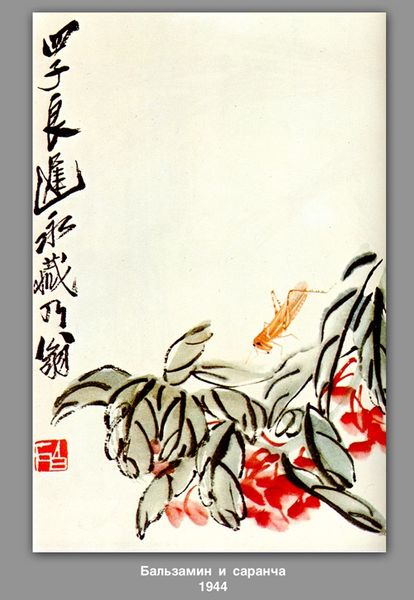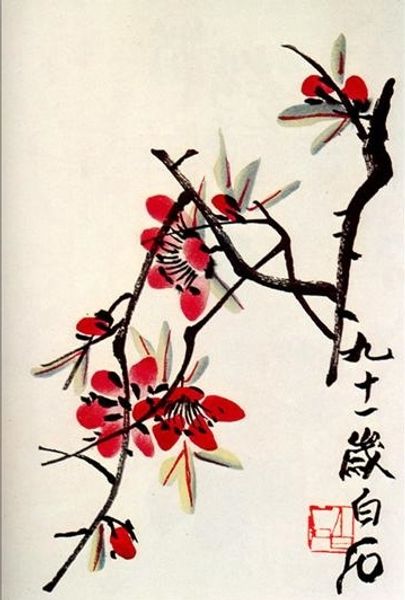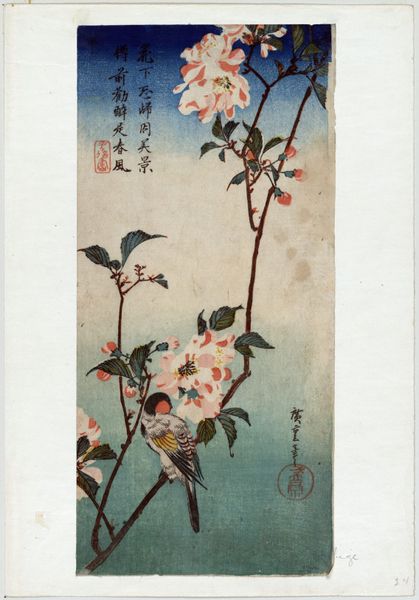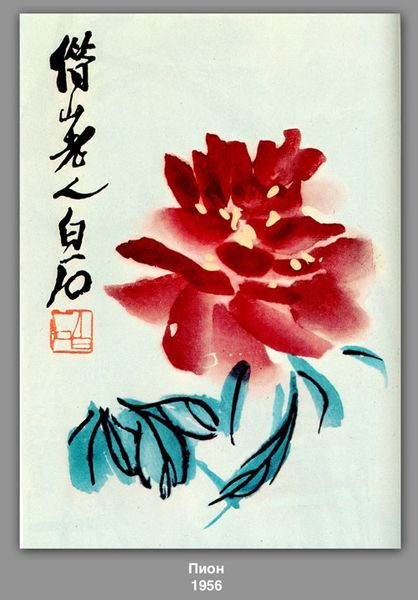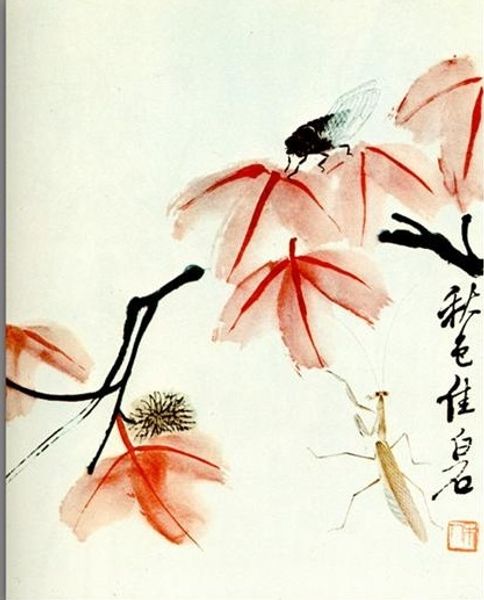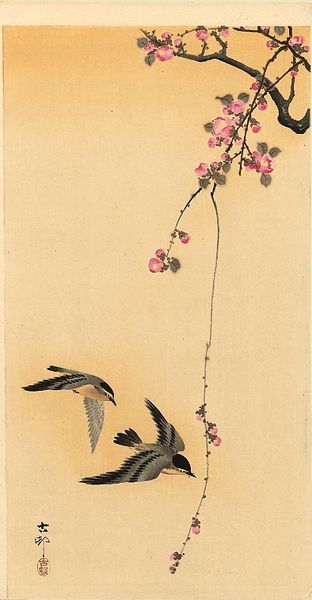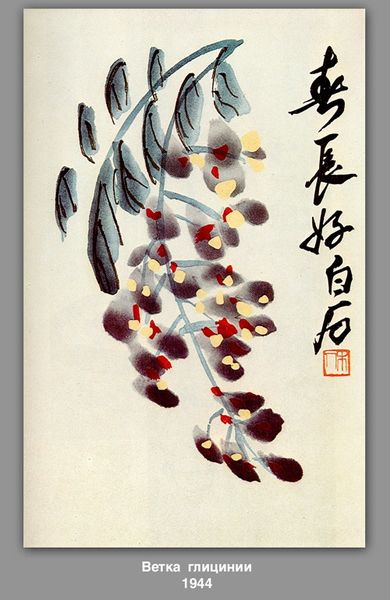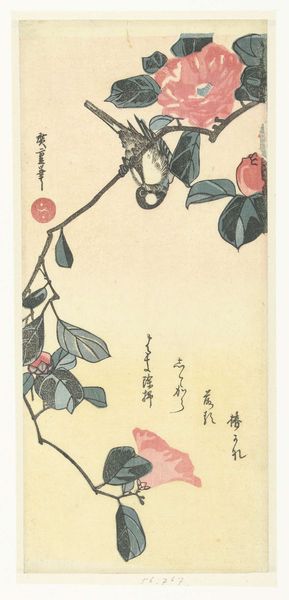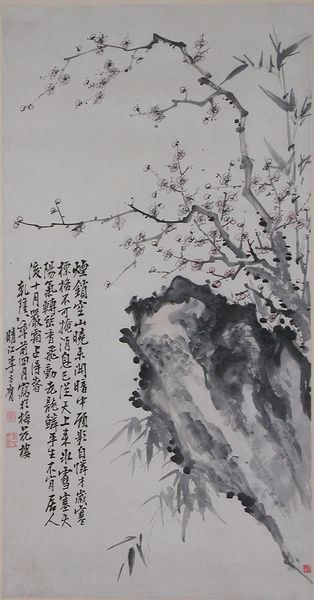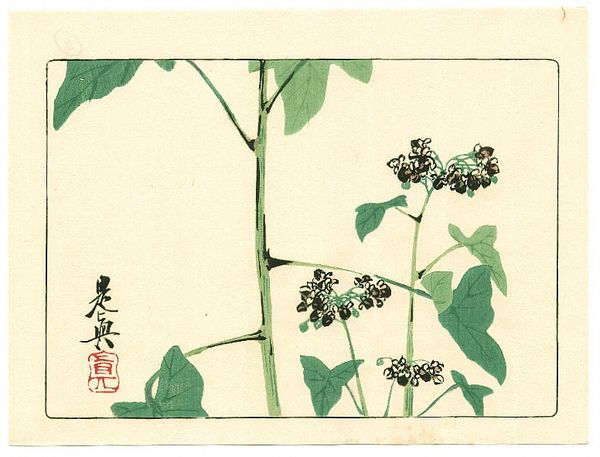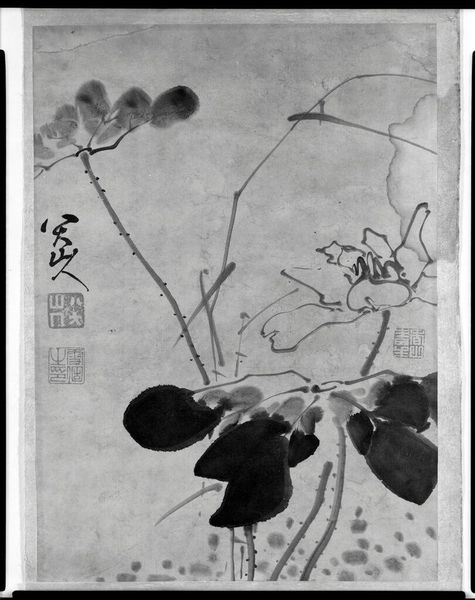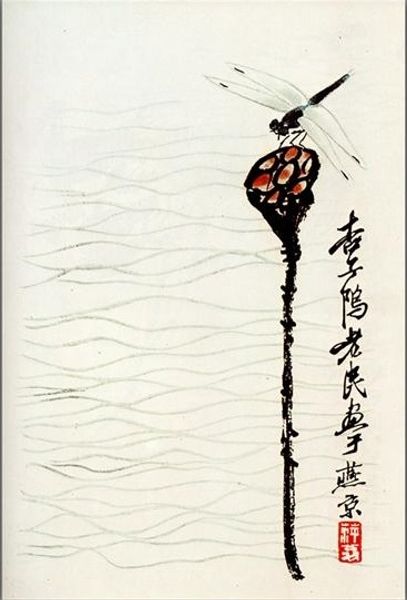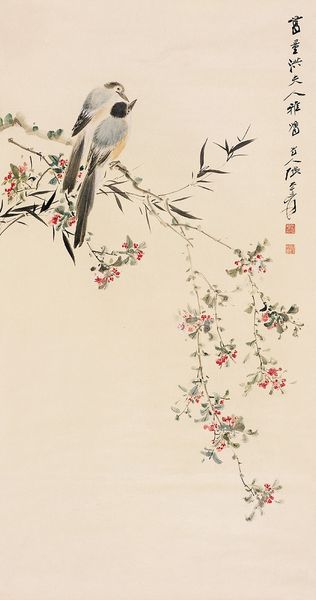
Copyright: Public domain China
Curator: Let's turn our attention to Qi Baishi's "Butterfly and Flowering Plum," a watercolor from 1935. Editor: It has a fragile kind of beauty. The pale washes and thin, spidery lines create this feeling of fleetingness, like a spring morning. Curator: Qi Baishi lived through immense societal upheaval in China. Considering his traditional training alongside his lived experiences during war and revolution, how might we understand this image in terms of cultural resilience? Does this delicate scene, so focused on natural beauty, offer a form of resistance or commentary? Editor: The plum blossom itself is heavy with symbolism. Representing perseverance and hope in Chinese culture, it blooms even in harsh winters, embodying strength. That butterfly, a soul or symbol of transformation, fluttering near the resilient bloom – is Baishi suggesting we, too, can transform even in trying times? Curator: Precisely. And the visual language used—the gestural strokes of ink, the strategically placed blank spaces—draws heavily from traditional literati painting, an art form historically tied to intellectual and political commentary. What about the relationship between these art forms and historical expectations? Editor: There's a sense of longing present, too, don’t you think? Butterflies often carry the symbolism of the soul but were thought, also, to bear connections between life and death, a possible link to ancestors, perhaps, or lives now lost? Curator: An interesting interpretation. Baishi seems to be actively negotiating this dialogue between honoring traditions and responding to his environment. Editor: This image certainly gives a sense of tranquility but within it there are threads of hope and loss all knotted together. A gentle artwork that asks for much consideration, it’s more than simple naturalism. Curator: Precisely, It urges us to consider the complexities of cultural and individual resilience, painted in subtle strokes and quiet observation. Editor: And maybe, consider more the connections we maintain with those now gone.
Comments
No comments
Be the first to comment and join the conversation on the ultimate creative platform.
